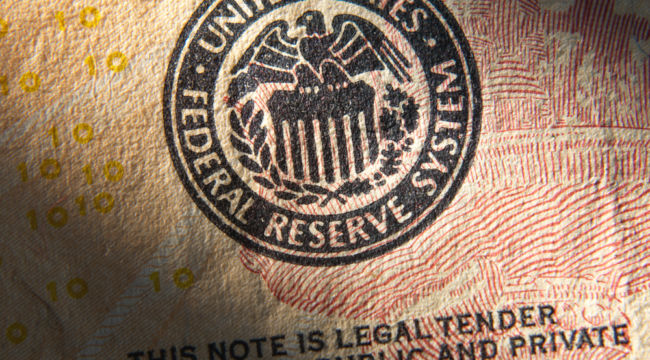REVEALED: The True Impact of “Unconventional Monetary Policy”
What has been the specific economic impact of post-2008 “unconventional monetary policy”?
Has it helped? Has it hurt?
Neither? Both?
Today the official scorecard is in… which we reveal shortly.
First we glance at a different type of scorecard — the stock market.
Today, for the fourth straight session, both the S&P and Nasdaq set fresh records.
The Dow Jones also ended the day higher.
Though still 2% off its January top… it has officially emerged from correction territory after more than six months in the wilderness.
Bears really have to whistle hard to keep their courage up these days.
Trade wars… Turkey… skyshooting debt levels — nothing seems to matter now.
We assume the gods are plotting… and biding their time.
But to the topic under discussion…
Deutsche Bank has just released what it terms “a report card for unconventional monetary policy.”
“Unconventional monetary policy” of course refers to quantitative easing, zero interest rates, negative interest rates and the rest of the tools in the central banker’s deepening kit.
Deutsche Bank examined their impact on several metrics of economic performance around the world.
The telling results, as summarized by analyst Daniel Lacalle:
1. In eight of the 12 cases analyzed, the impact on the economy was negative
2. In three cases, it was completely neutral
3. It only worked in the case of the so-called QE1 in the U.S. and fundamentally because the starting base was very low and the U.S. became a major oil and gas producer.
For emphasis:
In 11 of 12 instances… “unconventional monetary policy” proved either negative or insignificant.
Torsten Slok, chief international economist at Deutsche Bank:
How do you evaluate if QE and negative interest rates are working?… The issue is if QE and negative rates have been supporting the economy…
The conclusion is that U.S. QE1 had an impact but in all other cases the impact of QE and negative interest rates has been insignificant. And in eight out of 12 cases, the economic impact has been negative.
We enter the following graphic into the record as evidence of central bank futility:

Where have all the benefits of unconventional monetary policy accrued?
In the stock market, of course.
Cheap debt and ultra-low interest rates have driven the herd into stocks.
And corporations, fattened on cheap debt, have purchased their own stocks at a record gallop.
We need only point to today’s record highs as proof thereof.
Meantime, the average American, toiling on Main Street, has been losing his toehold on the economic ladder.
We are told unemployment has been licked.
But former colleague David Stockman informs us that Americans had 73.83 million “breadwinning” jobs in July.
That figure is only one million jobs higher than 18 years ago.
A quaint fact when you consider today’s population is 48 million greater.
Nor is the average worker outpacing inflation.
Wages are rising about 2.8%.
But inflation is on the creep… like a silent thief on tiptoe.
July’s inflation rate registered 2.9%.
Core inflation is nearing its highest levels in six years.
The average worker is thus a hamster set upon his wheel… running in place… or worse.
Does this enhance the long-term safety of the American republic?
Historian Peter Turchin is the author of War and Peace and War: The Rise and Fall of Empires (we tip our hat to Daily Reckoning contributor Charles Hugh Smith for the reference).
At the height of the Roman Republic, Turchin informs us that the wealth of Rome’s top 1% was perhaps 10–20 times a commoner’s.
At the time of Rome’s terminal imperial decline… it may have risen to 10,000 times.
America’s numbers aren’t quite so out of joint — yet.
But nonetheless…
The vast bulk of the “recovery’s” gains have gone to the asset-holding classes, while the great American middle has given ground.
It has only widened the gulf developing since the mid-1980s, when the financialization of the U.S. economy was getting underway:

If trends continue… will the center hold?
Turchin lists three dynamics common of late imperial decline throughout history:
1. Stagnating real wages due to oversupply of labor.
2. Overproduction of parasitic elites.
3. Deterioration of central state finances.
Please ask yourself, dear reader, if any of the preceding apply to today’s United States.
Maybe No. 2 at least… or No. 3?
The national debt stands at $21 trillion.
Trillion-dollar annual budget deficits are now in prospect for years to come.
Something, somewhere, sometime, must give way.
But put away all your concerns… and rejoice on this late summer day — the stock market is at record highs.
Regards,
Brian Maher
Managing editor, The Daily Reckoning



Comments: